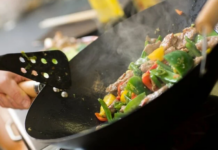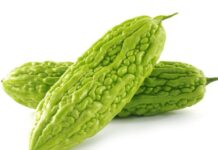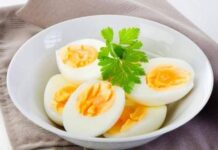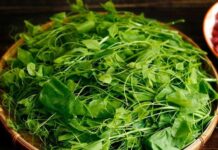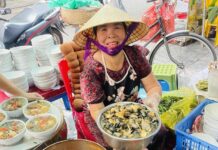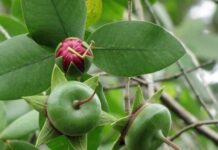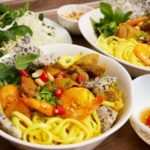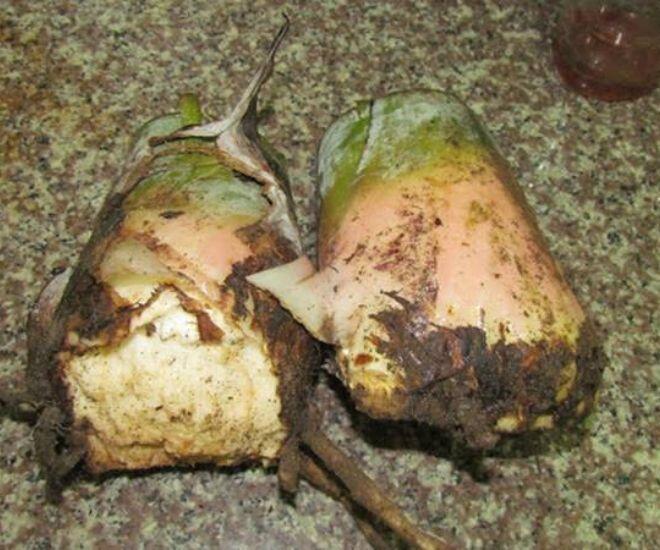
Banana stem salad, a humble dish rooted in the heart of Ha Tinh’s rural culture, originates from the underground stem of the seeded banana plant. Historically, locals embraced this readily available and cost-free ingredient, especially during lean times when food scarcity was a reality. Through ingenuity born of necessity, they transformed the stem into a refreshing salad, perfectly suited to Central Vietnam’s climate.
Despite today’s abundance and the rise of new delicacies, banana stem salad remains a cherished staple. Many Ha Tinh families still prepare it for everyday meals, particularly during hot seasons when light, cooling dishes are preferred. For those who’ve left their homeland, especially those who grew up in hardship, this salad holds sentimental value, evoking memories of simple family meals. Some even request relatives send it from Ha Tinh to cities like Hanoi or Ho Chi Minh City to savor its authentic flavor.
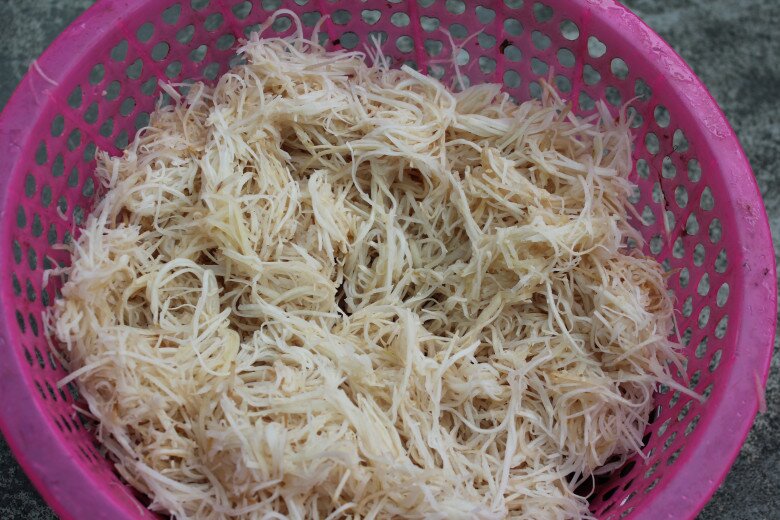
The key to this dish lies in using young or tender seeded banana stems. Locals note that other varieties yield a bitter or astringent taste, lacking the signature freshness. After harvesting, the stem is peeled, washed, and thinly shredded. To prevent discoloration, the shreds are immediately soaked in salted water. Once blanched and cooled, they’re combined with other ingredients.
A perfect banana stem salad harmoniously blends multiple components: shredded stem, bean sprouts, minced lime leaves, crushed roasted peanuts, chili, cilantro, and sliced starfruit. Roasted peanuts are essential, adding a nutty aroma and richness. Balancing flavors is an art—maintaining the stem’s freshness while ensuring a tangy, spicy, and savory profile. This equilibrium makes the salad refreshing, versatile for both main and side dishes.
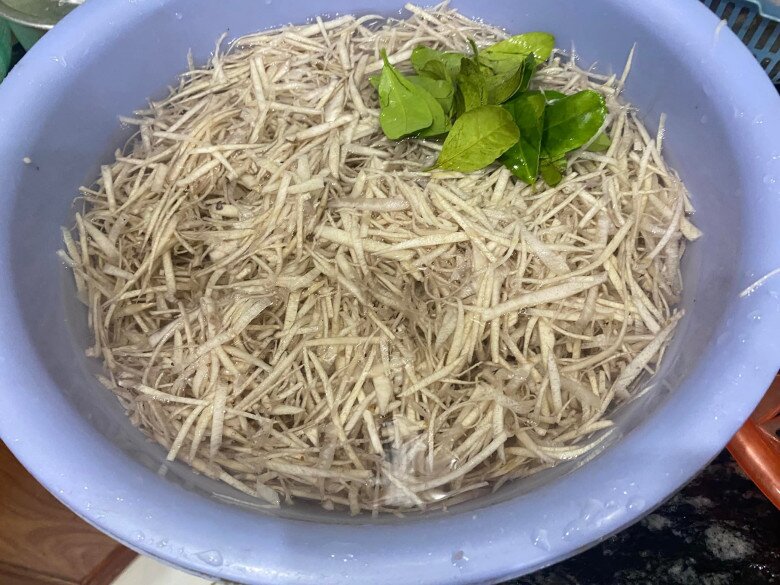
Affordability is another reason for its enduring popularity, with a family-sized portion costing just 5,000 to 10,000 VND. This accessibility has cemented its place in everyday cuisine. Beyond local consumption, many households fulfill orders from afar, especially for expatriates craving a taste of home.

In today’s health-conscious era, banana stem salad stands out as a natural, low-protein option. Amidst the rise of processed foods, its chemical-free, digestible nature is increasingly valued. Its cooling properties make it ideal for Central Vietnam’s humid climate.
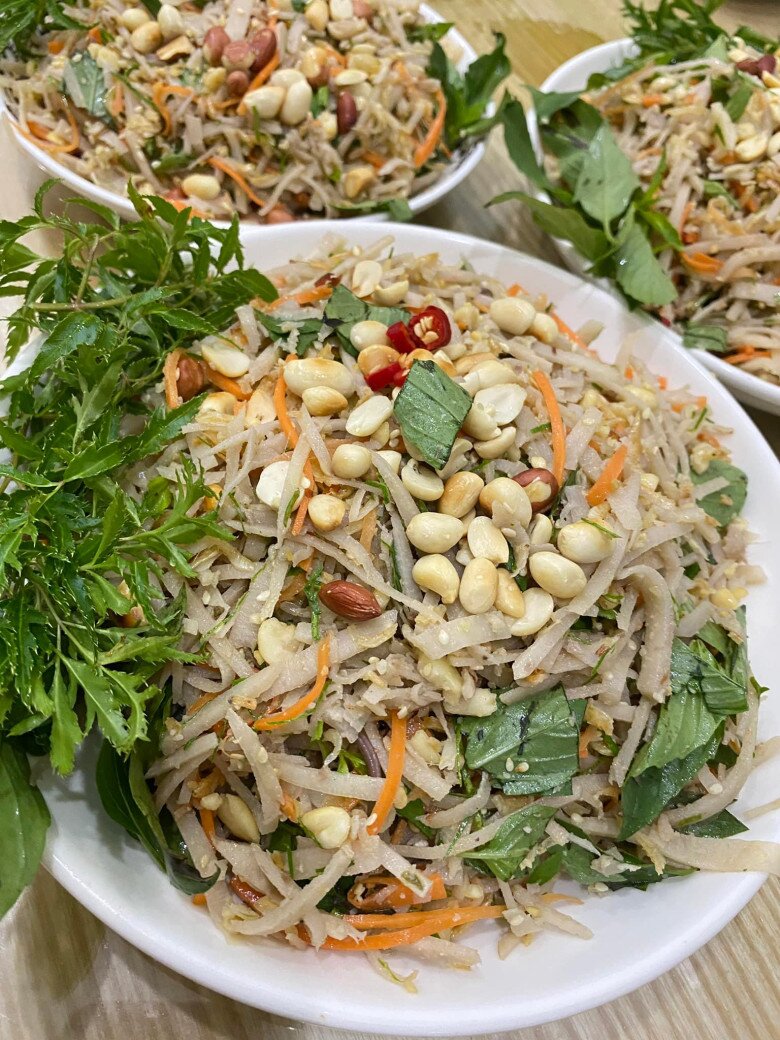
While not elaborate, banana stem salad embodies Ha Tinh’s culinary heritage—simple, authentic, and timeless. From a survival dish to a cultural emblem, it bridges generations and distances, its flavors reconnecting expatriates to their roots.
The Ultimate Christmas Gift Guide: 20 Ideas for Little Boys
Are you looking for the perfect Christmas gift for your little boy this year? Join us as we explore 20 exciting and unique gift ideas that are sure to bring a smile to his face. From educational toys to fun-filled adventures, we’ve got something for every young boy’s interest. So, get ready to make this Christmas extra special and create lasting memories with these thoughtful gift suggestions!
The Ultimate Guide to Mastering Authentic Quang-Style Noodle Soup at Home
Introducing the tantalizing world of Mi Quang, a Vietnamese noodle dish that’s sure to tantalize your taste buds. With origins in Central Vietnam, this dish boasts a unique blend of flavors and textures that set it apart from any other noodle dish you’ve ever tried.
Typically cooked with pork or chicken, Mi Quang sometimes features a unique twist with fish or frog meat. But what truly sets it apart is the sparse amount of broth used – just enough to wet the noodles. Served with fresh herbs and toasted rice paper, Mi Quang is a culinary adventure you don’t want to miss.
Get ready to whip up a storm in the kitchen as we dive into the world of this delectable dish!







